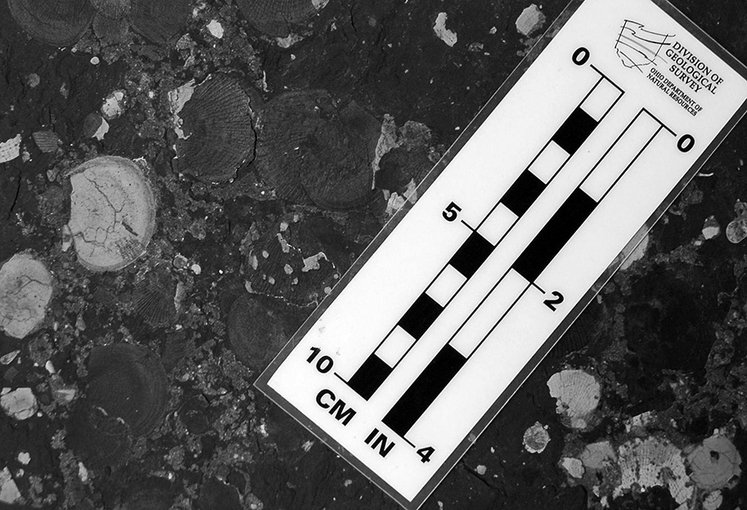
Nov. 30, 2018
Research Highlight
Impacts on Evolution following the Late Ordovician Mass Extinction

Brachiopod fossils from Carroll County, Ohio. Brachiopods are bivalved (two-shelled) animals, with hinged shells that can be opened to admit seawater, which is filtered for food particles.Image credit: Ohio DNR, http://geosurvey.ohiodnr.gov.
Near the end of the Ordovician period (485.4 to 443.8 million years ago), the Earth experienced the first of a series of extinction events in the Phanerozoic. Collectively, these events are often referred to as the Ordovician–Silurian extinction events, and represent one of the major such events known to have occurred on the planet. However, this interval of extinction had low ecological selectivity, which means that overall community structure experienced little change.
A new study delves deeper into the effects of the Late Ordovician event by focusing on the phylogenetic relationships between strophomenoid brachiopods. Four families/subfamilies were sampled for the study from this diverse superfamily of brachiopods. Researchers investigated biogeographical changes in the population through time, and show that extinction was higher in those that inhabited tropical or subtropical regions. The results also indicate that there were shifts in diversification patterns following the extinction event; and while most families survived, some that were abundant before the event were driven to extinction or slowly died off afterward. It may be the case that selective diversification during the Silurian had more of an impact on the evolution of strophomenoid brachiopod populations than selective extinction during the Late Ordovician.
The study, “Evolutionary and biogeographical shifts in response to the Late Ordovician mass extinction,” was published in the journal Palaeontology. The work was supported by NASA Astrobiology through the Exobiology Program.